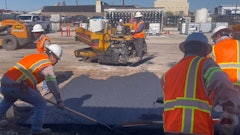In the course of going about their business, readers of this column have seen that some big box retailers are quick to respond to pressure from environmental activists by removing products from their shelves without an understanding of the purpose or benefit of the product, or an appreciation of the pros and cons of alternative products, or even if alternatives are available. Well-funded activist groups mount a media campaign against a store like Walmart or Home Depot claiming that the retailer is selling a dangerous product. Often the claim of danger is exceedingly remote or completely unfounded. The “Mind the Store” campaign is an example of how it works. An environmental alarmist group is mounting a social media campaign aimed at ten large retailers, pressuring them to stop selling all products that contain any amount of a list of one hundred chemicals. The alarmists claim that the chemicals are linked to a long list of frightening health problems, even when the scientific evidence is overwhelming that there is no cause for concern. The alarmists have two target audiences: consumers who can be scared into contacting the stores, and the stores themselves.
The big box stores have tried to head off potential public relations nightmares by making “sustainability commitments” to consumers, partnering with one or more of the activist groups. For example, Walmart, Target and other retailers joined with the Environmental Working Group (a well-known and well-funded activist group) and like-minded organizations for help in implementing hazard-based approaches to de-selecting products. In the world of regulation, the word “hazard” has a specific meaning, referring to an inherent property of a substance that, in certain circumstances can be dangerous. A puddle of water on the floor of a store, for example, is a drowning hazard as well as a slip-and-fall hazard.
Product deselection doesn’t mean that product smears have gone away, but now the retailers – ever mindful of the politics of perception - have bought some protection by caving to demands, whether or not warranted by the scientific facts. A big part of the price of capitulation is paid not by the retailers but by the manufacturers and suppliers and applicators of the deselected products. Pavement sealer manufacturers are well aware of this price.
The manufacturers and suppliers often have invested enormous time and effort into ensuring that these same products meet the stringent safety standards mandated by government regulations and manufacturing best practices. Finding replacements that do as good a job as a deselected product is no easy task, and drives up costs of all products. And who is to say that the replacement product won’t be targeted by alarmists in the same way once the safety testing is done? The goal of safety testing is to look for conditions under which the tested material is unsafe so those conditions can be avoided. Using a hazard based approach, alarmists can create fear about any product that’s undergone safety testing.
Is the answer to heading off fear-mongering to stop safety testing? Clearly that would be absurd. But some manufacturers have tried a variation of that approach. Certain lines of cosmetics advertise that they don’t do any animal testing. The reason they can say that is the manufacturers only use ingredients that have been tested on animals by others who found the materials to be safe. No, the answer to fear-mongering and product deselection is informed consumers. For the pavement coatings industry that means manufacturers and suppliers and applicators who understand their products and the risks (as opposed to hazards) associated with using their products.

























